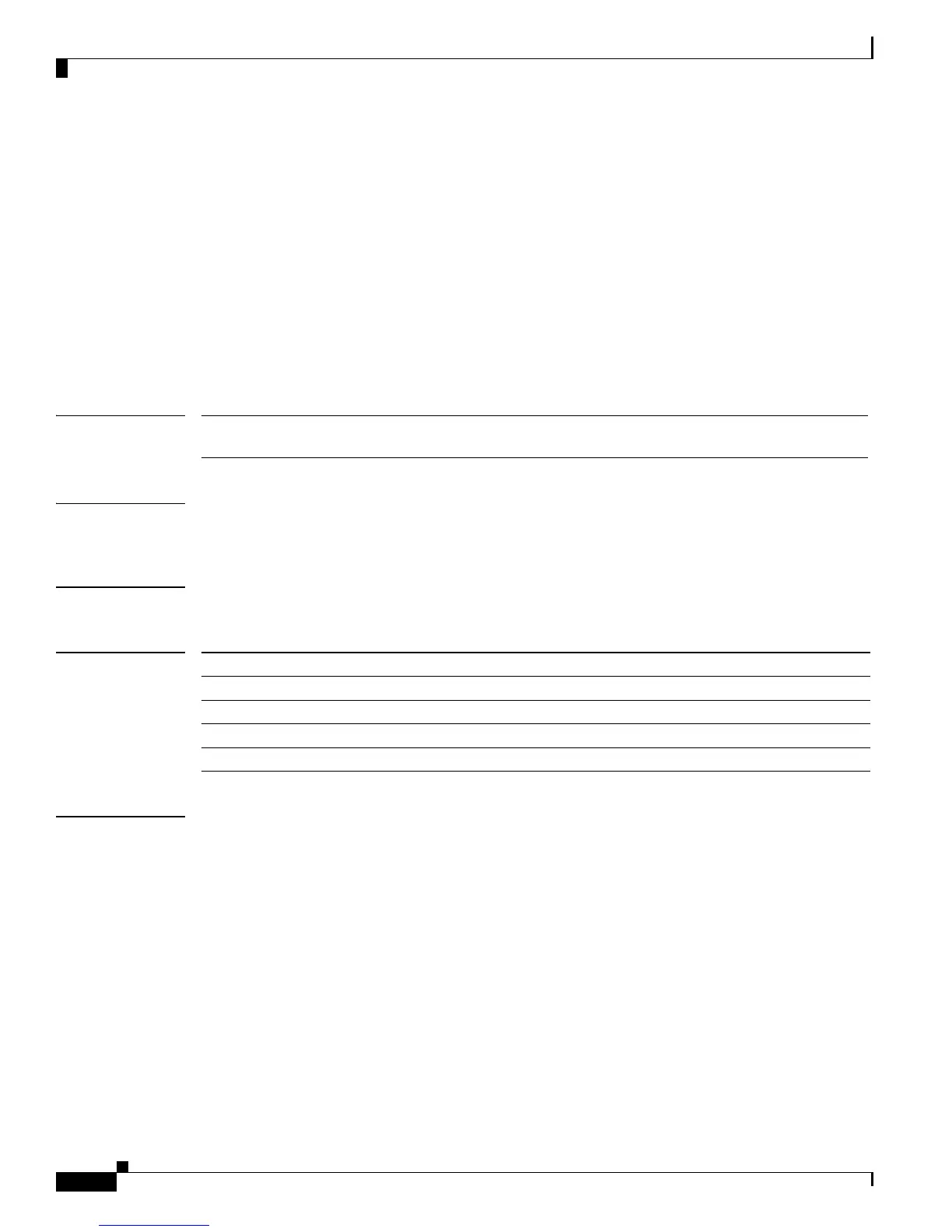3-74
Cisco CRS-1 Carrier Routing System to Cisco CRS-3 Carrier Routing System Migration Guide
OL-13669-03
Chapter 3 Cisco CRS-3 Carrier Routing System Router Command Changes
QoS Command Changes
QoS Command Changes
priority (QoS)
To assign a priority to a class of traffic belonging to a policy map, use the priority command in policy
map class configuration mode. To remove a previously specified priority for a class, use the no form of
this command.
priority [level priority-level]
no priority
Syntax Description
Command Default If a priority action is not configured in a class, traffic in that class is not serviced with strict priority—
it is serviced after priority classes are serviced.
Command Modes Policy map class configuration
Command History
Usage Guidelines To use this command, you must be in a user group associated with a task group that includes the proper
task IDs. If you suspect user group assignment is preventing you from using a command, contact your
AAA administrator for assistance.
The priority command configures low-latency queueing (LLQ), providing strict priority queueing (PQ).
Strict PQ allows delay-sensitive data such as voice to be dequeued and sent before packets in other
queues are dequeued. When a class is marked as high priority using the priority command, we
recommend that you configure a policer to limit the priority traffic. This policer ensures that the priority
traffic does not starve all other traffic on the line card, which protects low-priority traffic from starvation.
Use the police rate to explicitly configure the policer.
The priority command sets up classes based on a variety of match criteria (such as match precedence,
match dscp, or match exp) and assigns a priority to them.
The bandwidth and priority commands cannot be used in the same class, within the same policy map.
These commands can be used together in the same policy map.
level priority-level (Optional) Sets the class priority level value. Values are 1 or 2; default level
is 1. Level 1 priority traffic is served first.
Release Modification
Release 2.0 This command was introduced on the Cisco CRS-1.
Release 4.0.0.T The level keyword was added.
Release 4.0.1 No modification.
Release 4.0.2 No modification.

